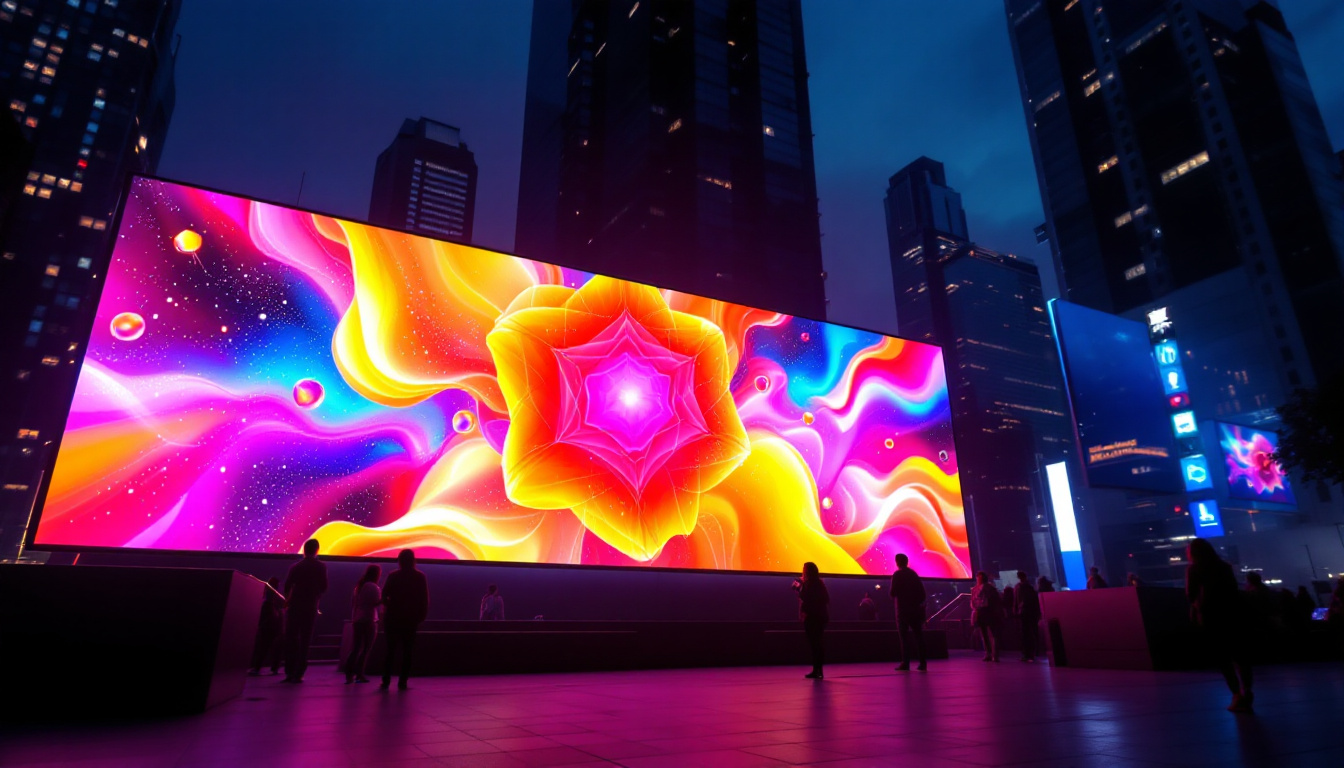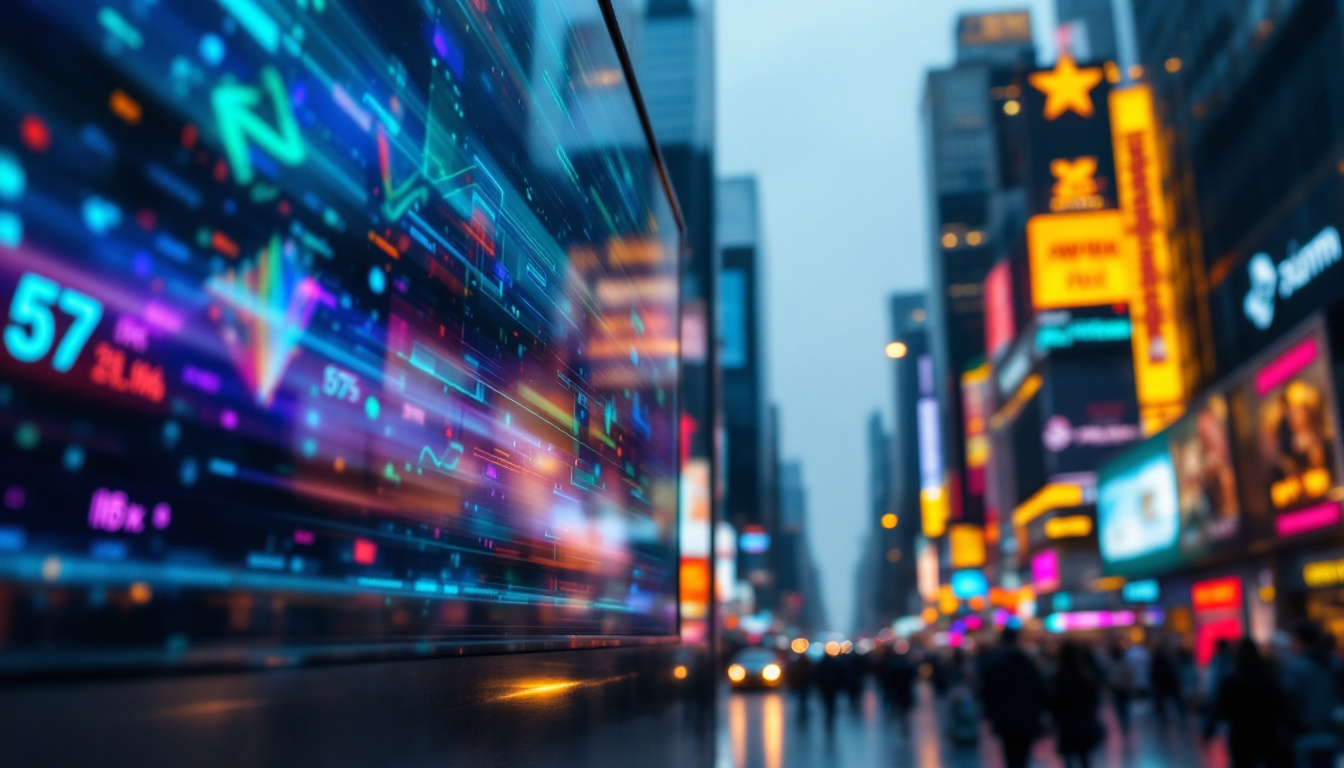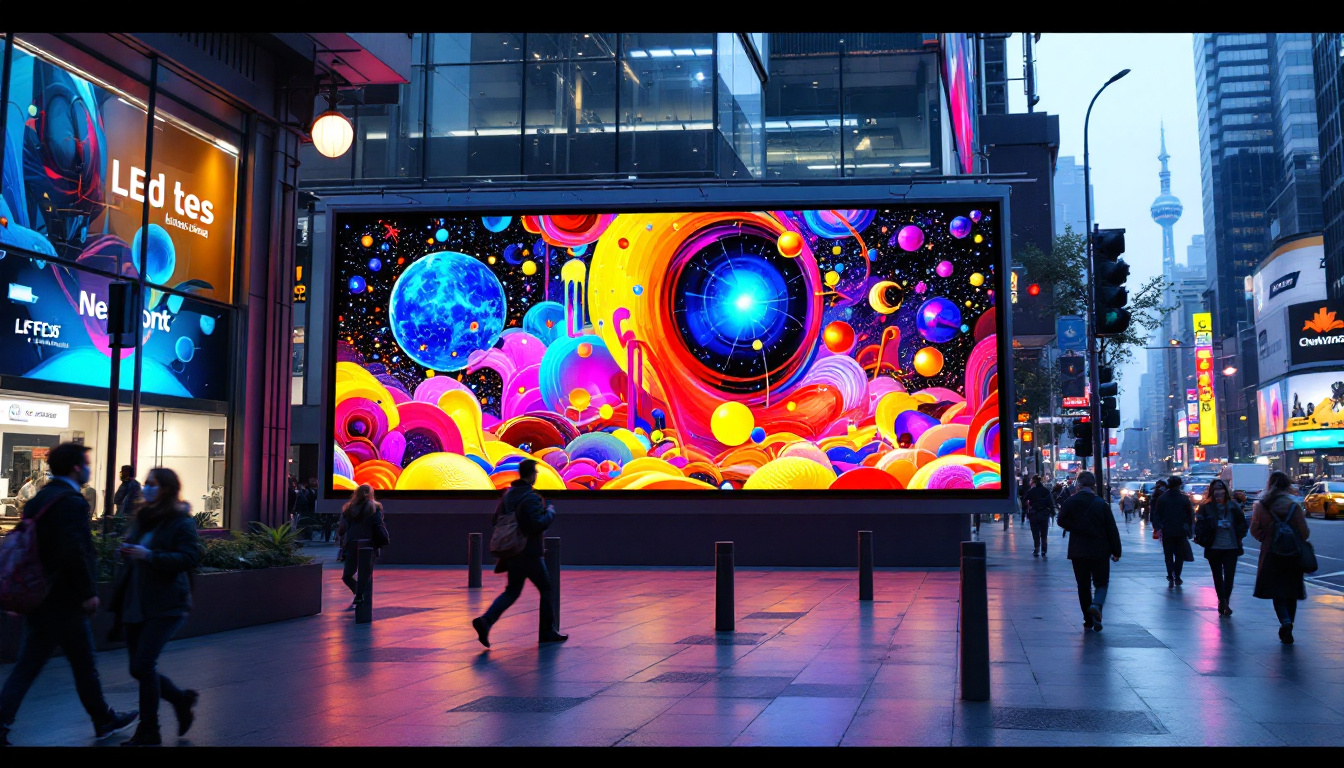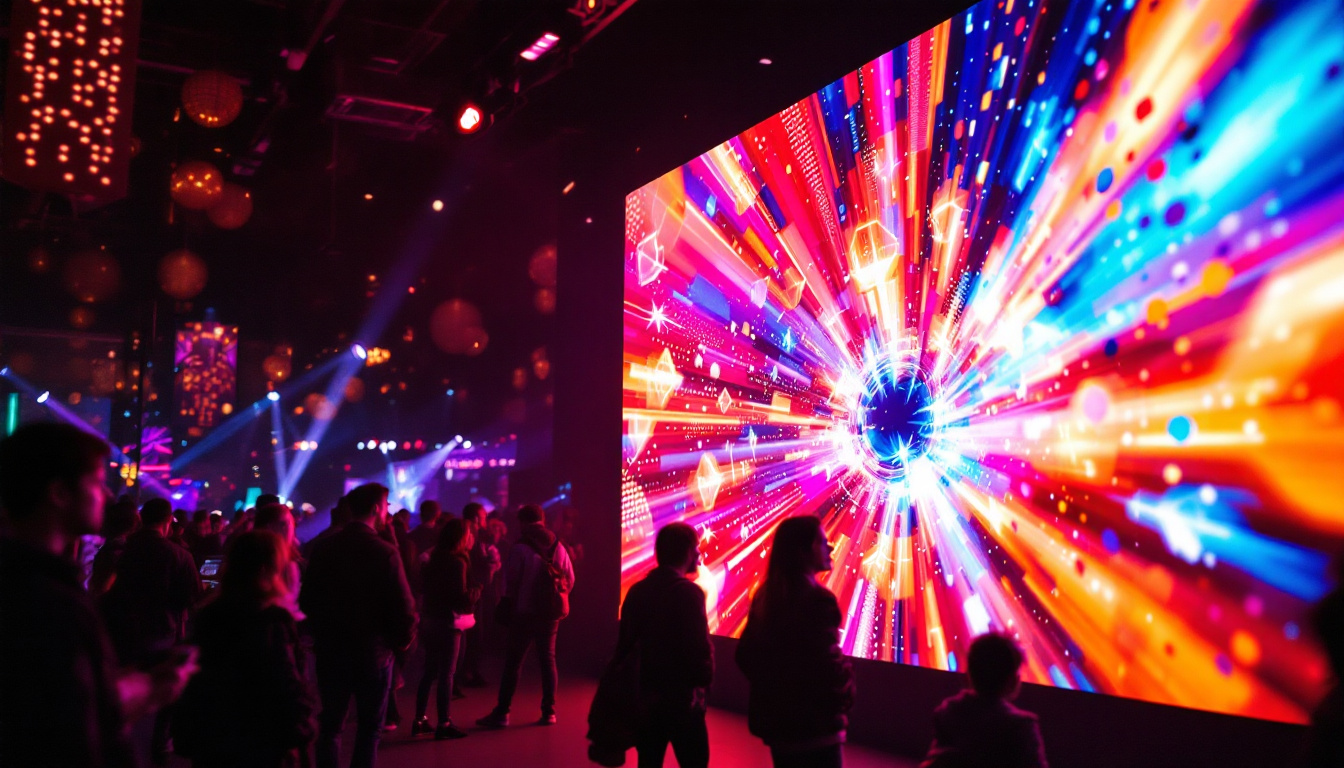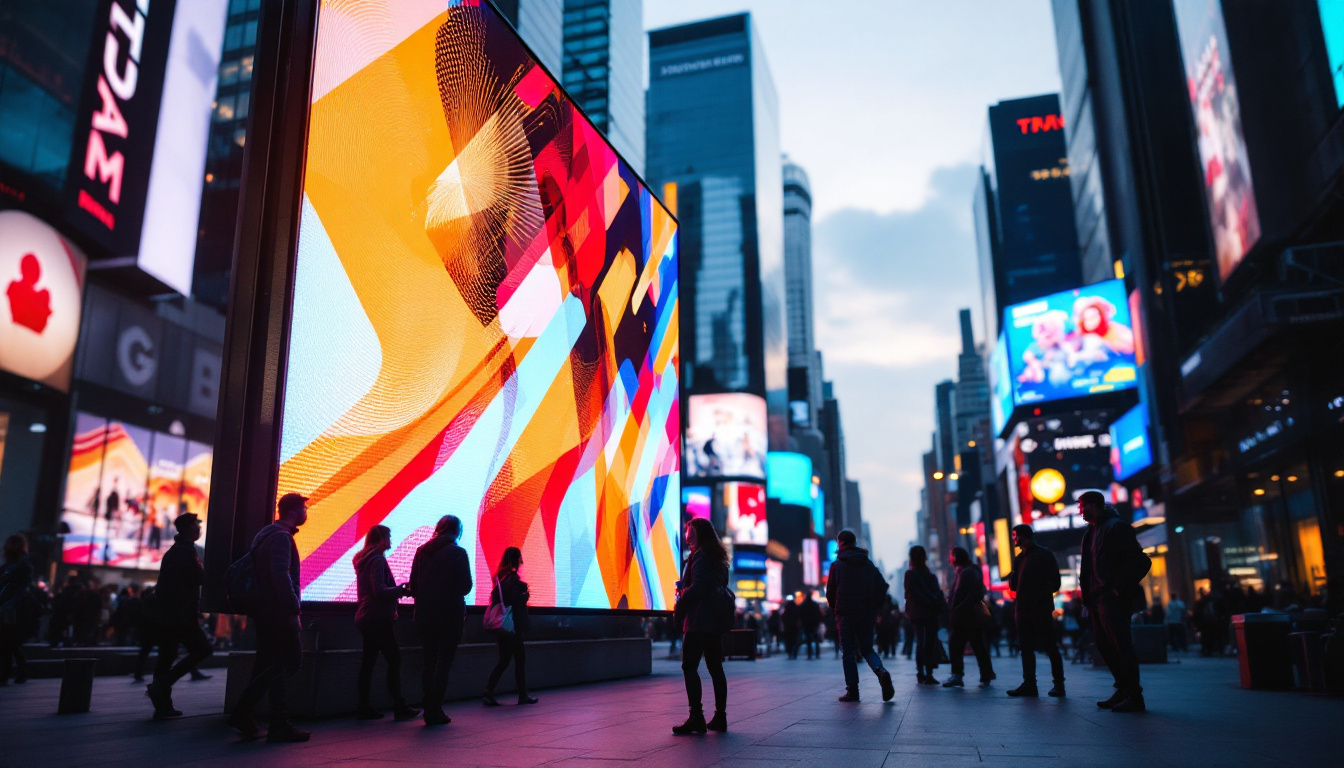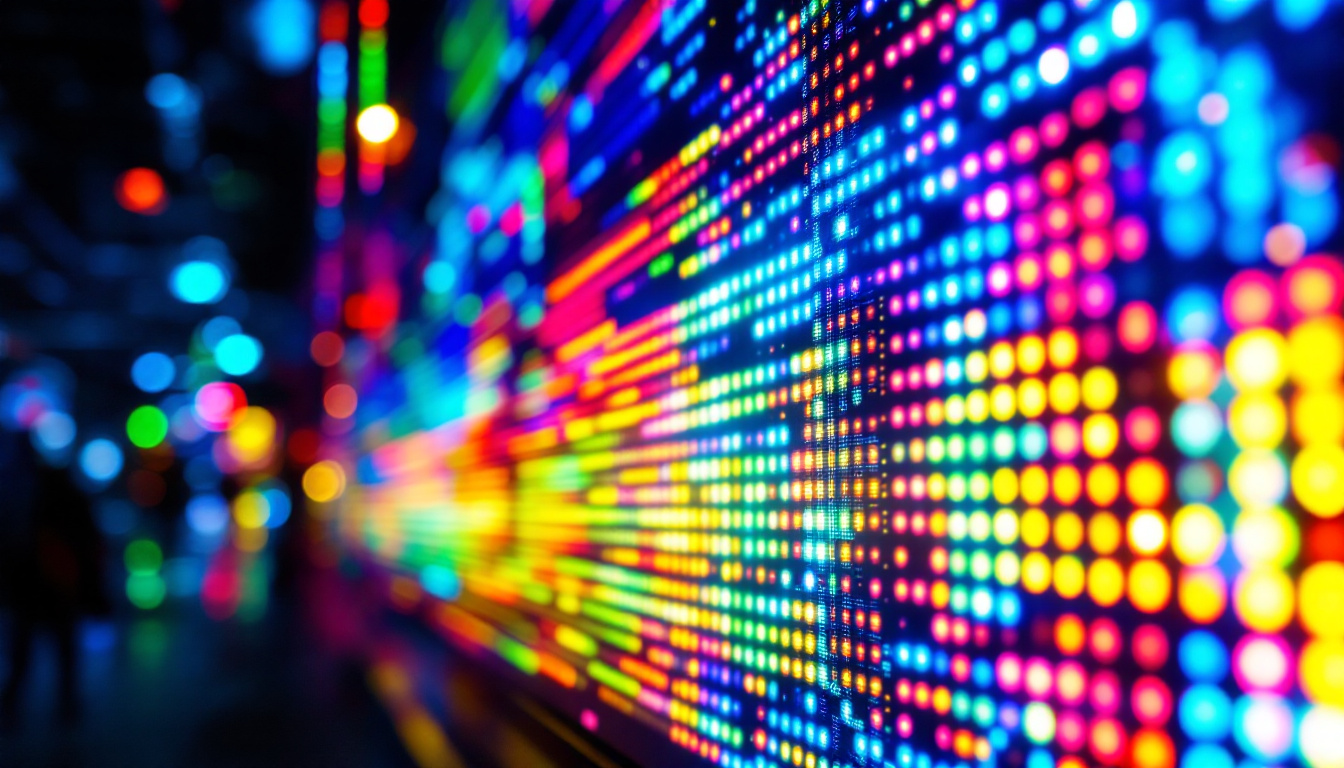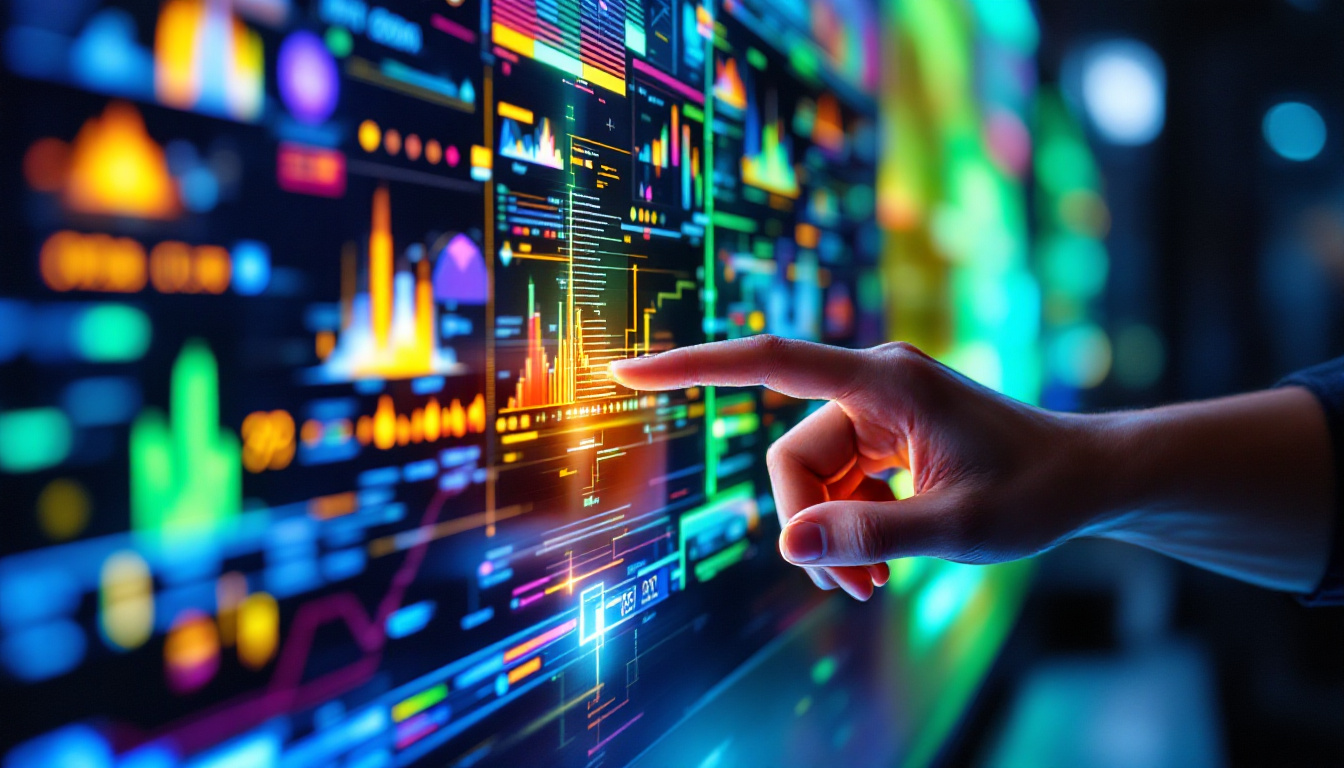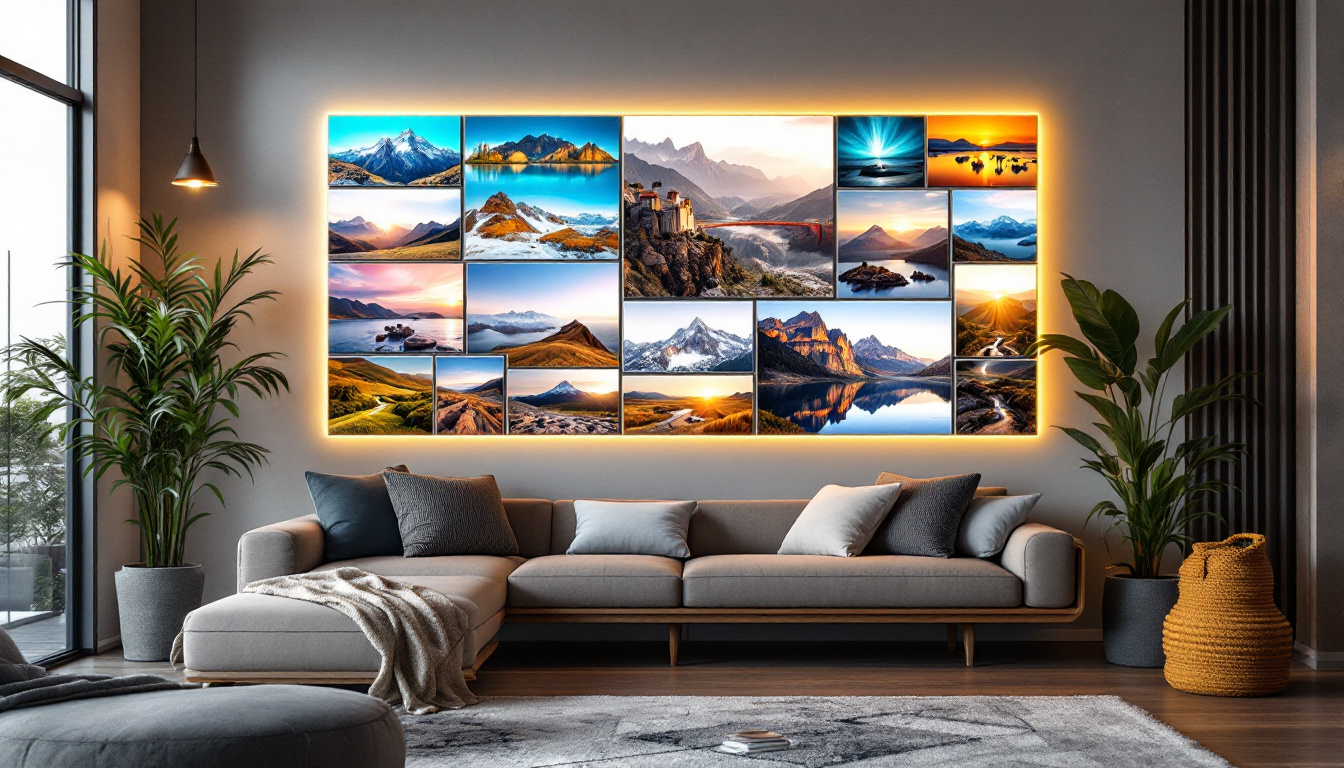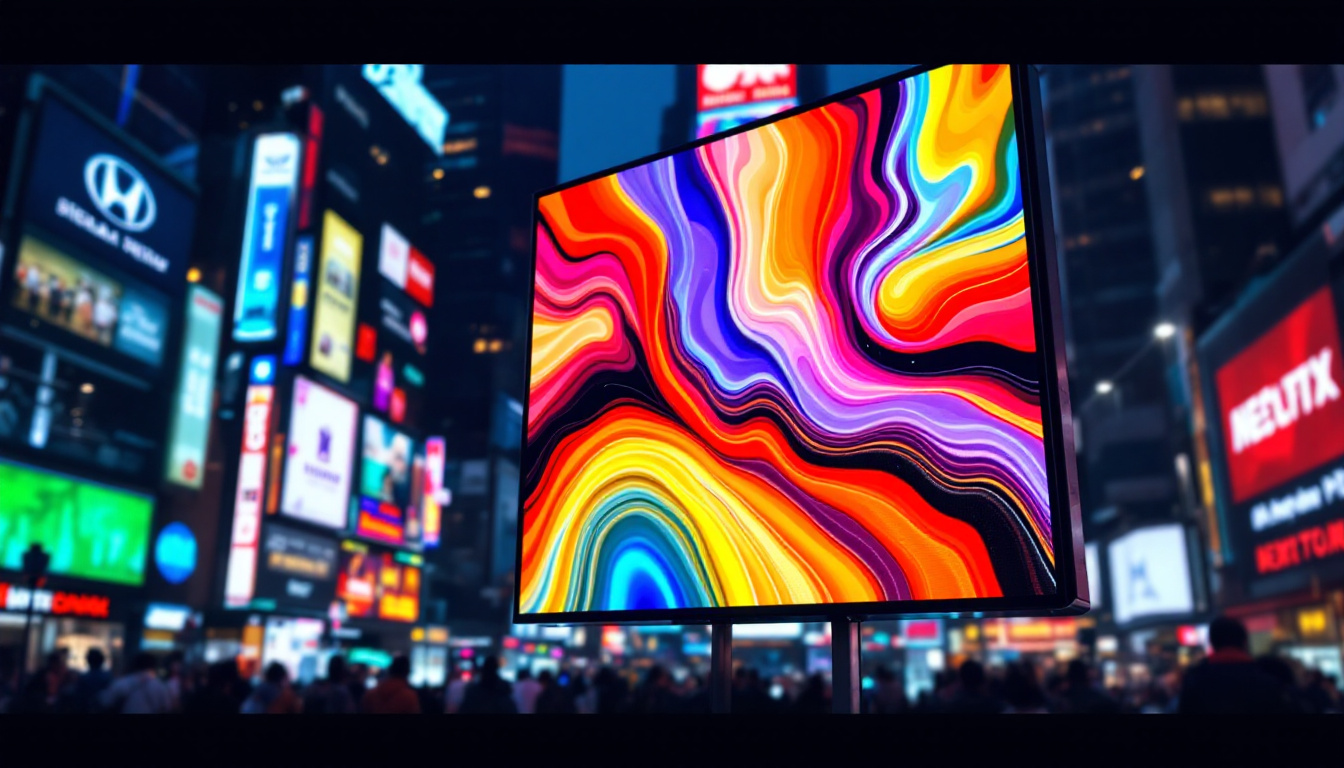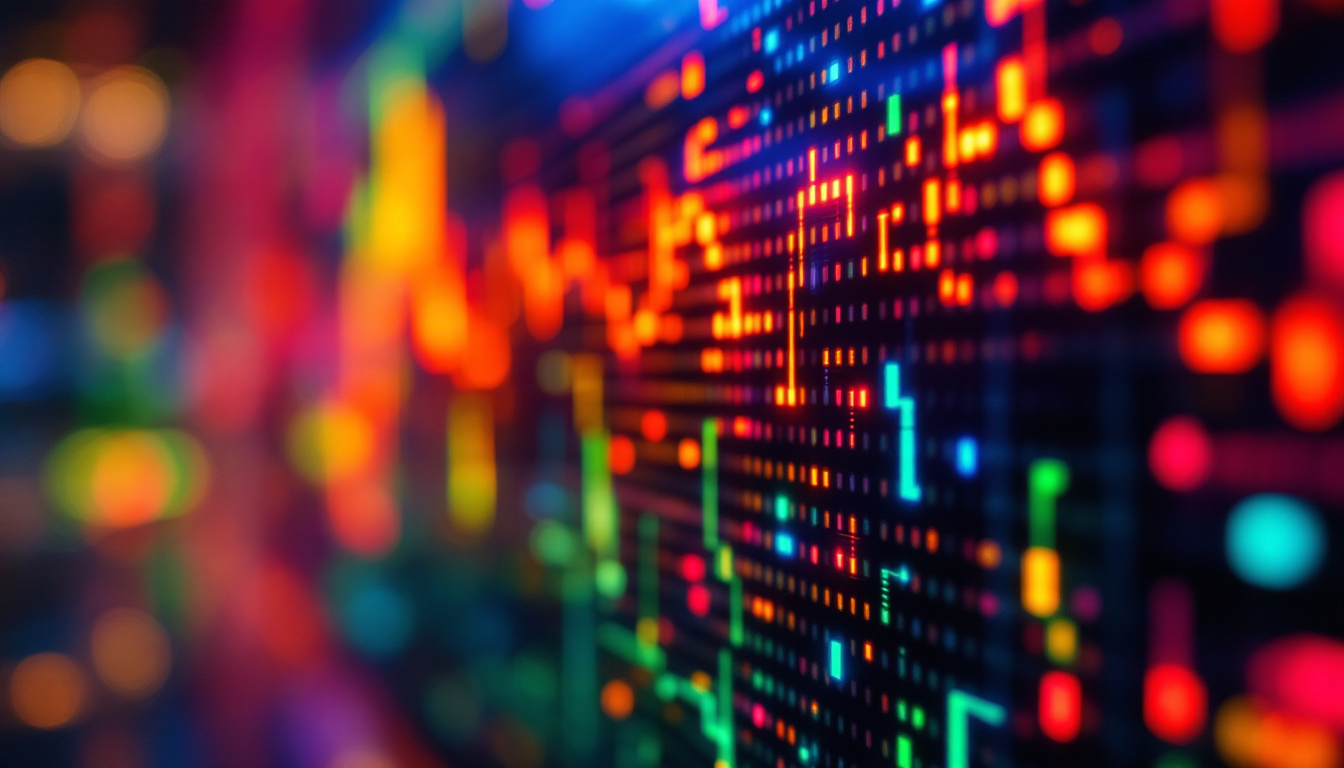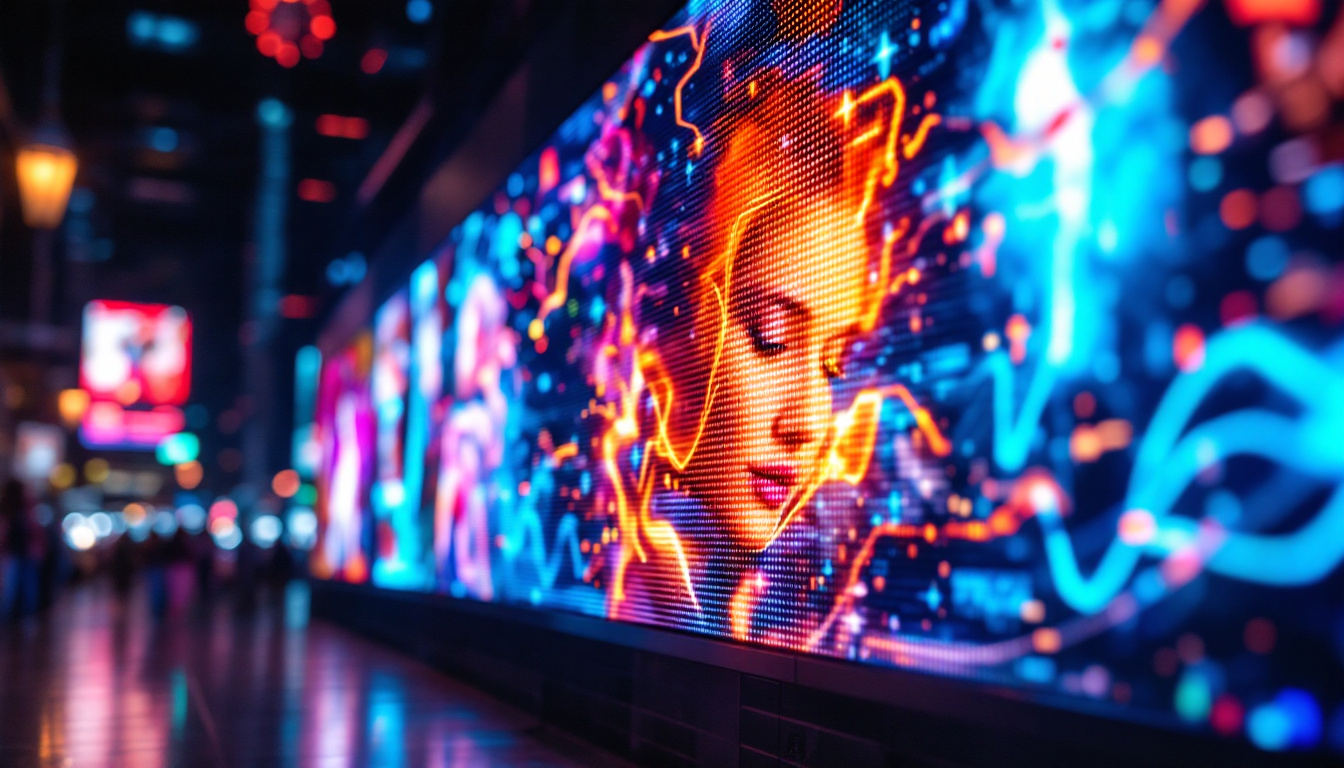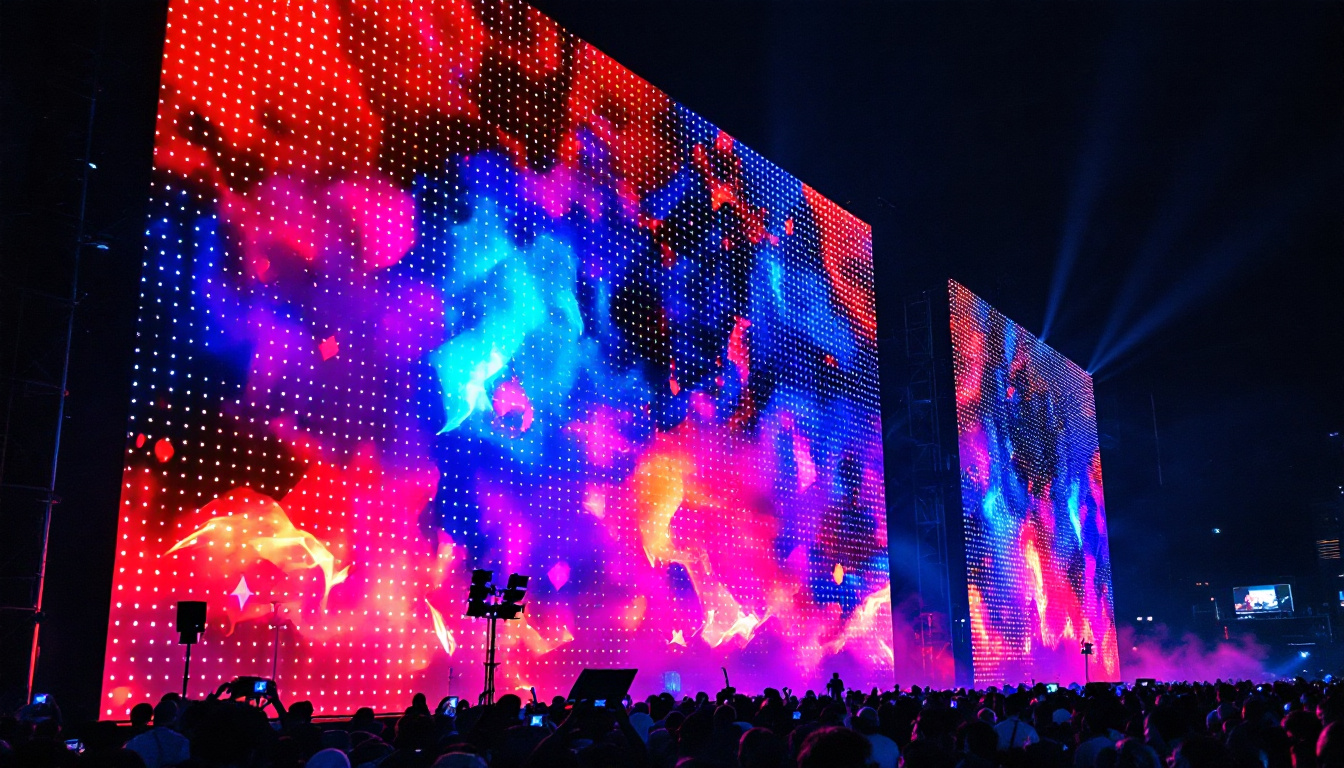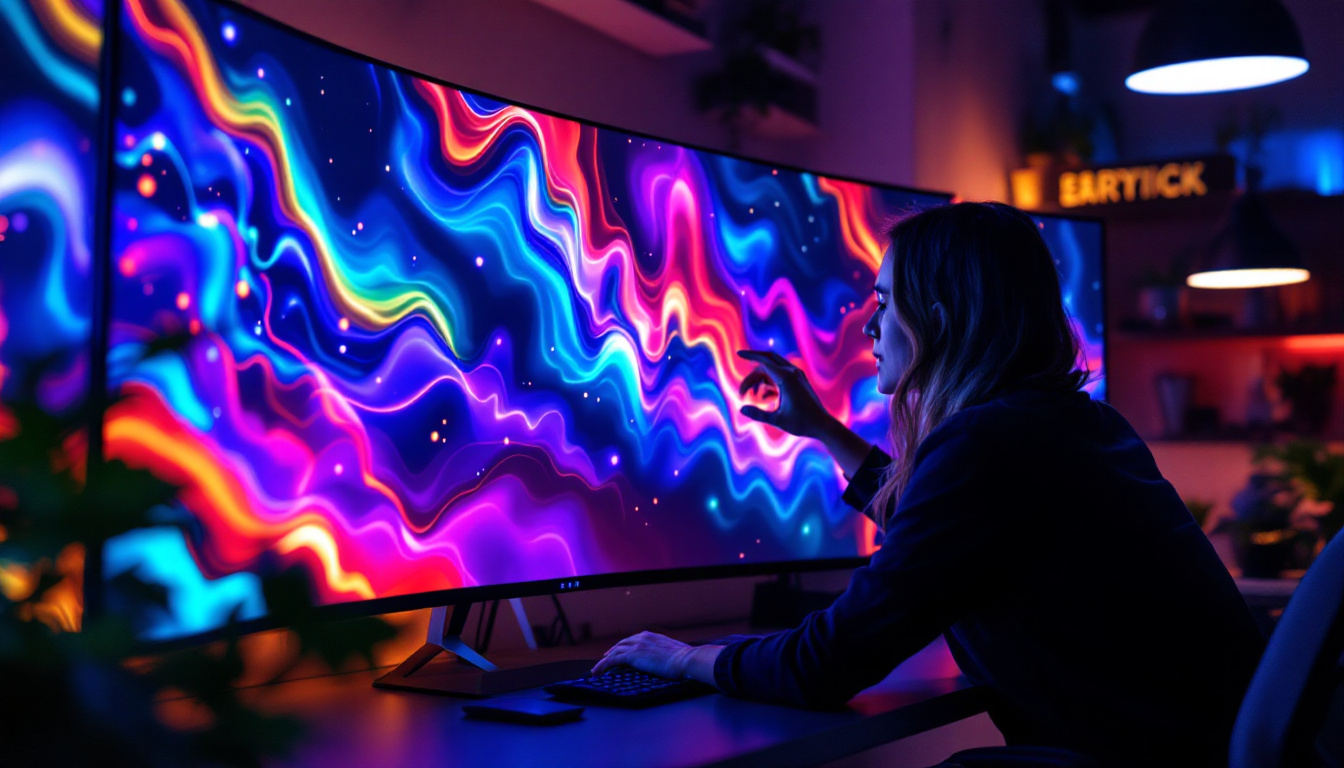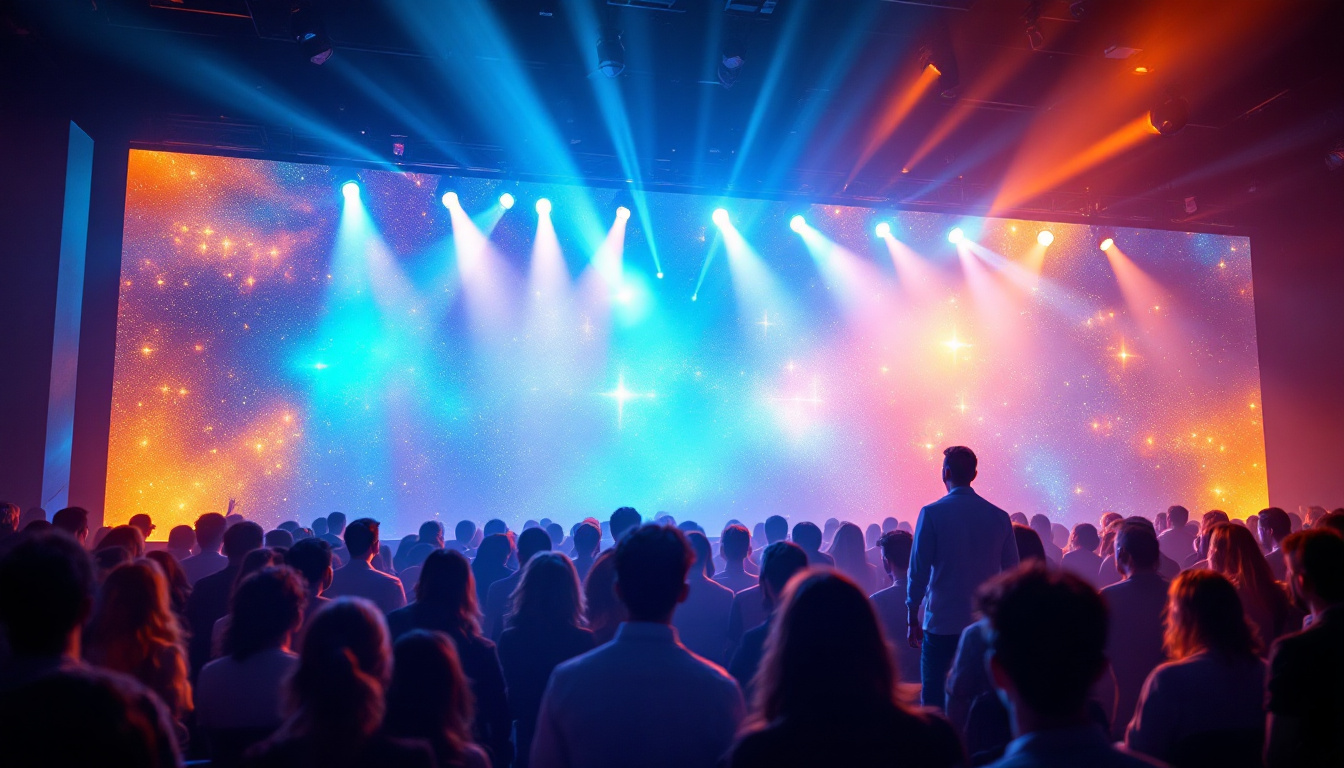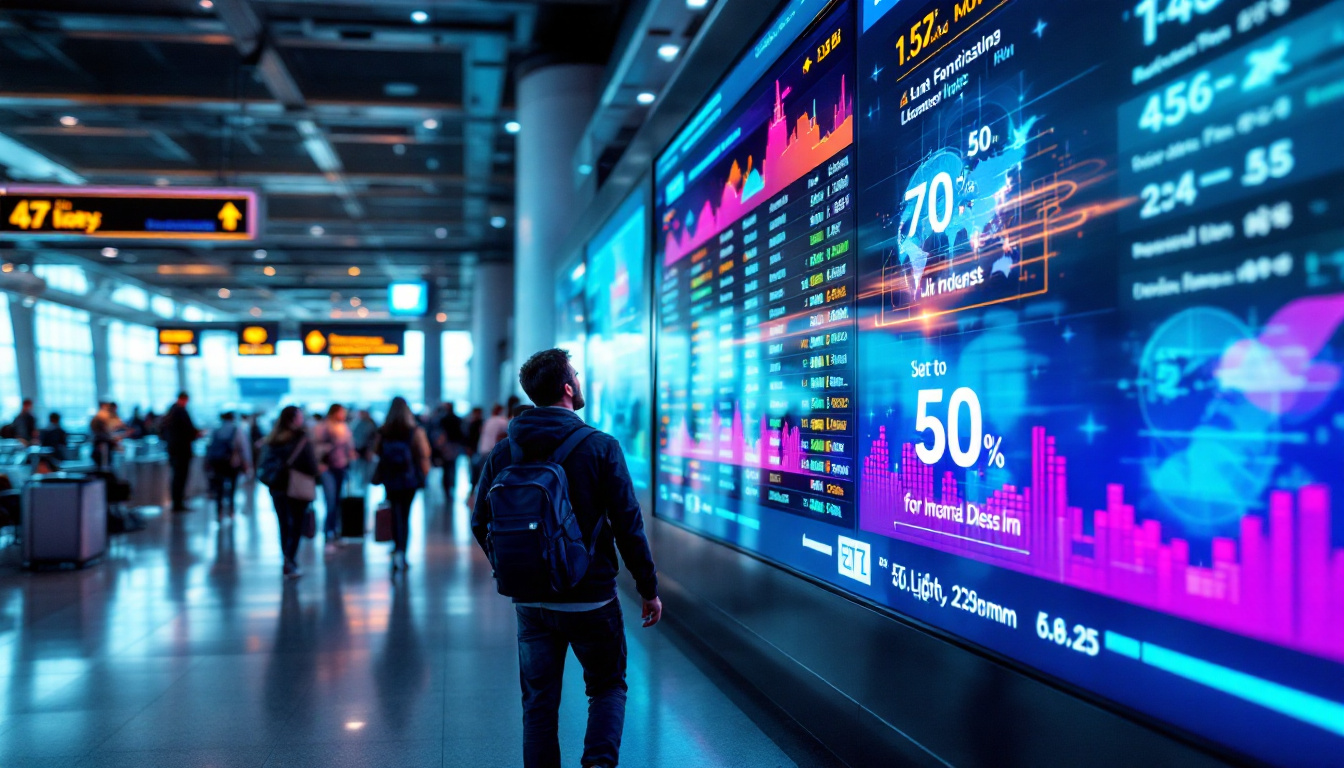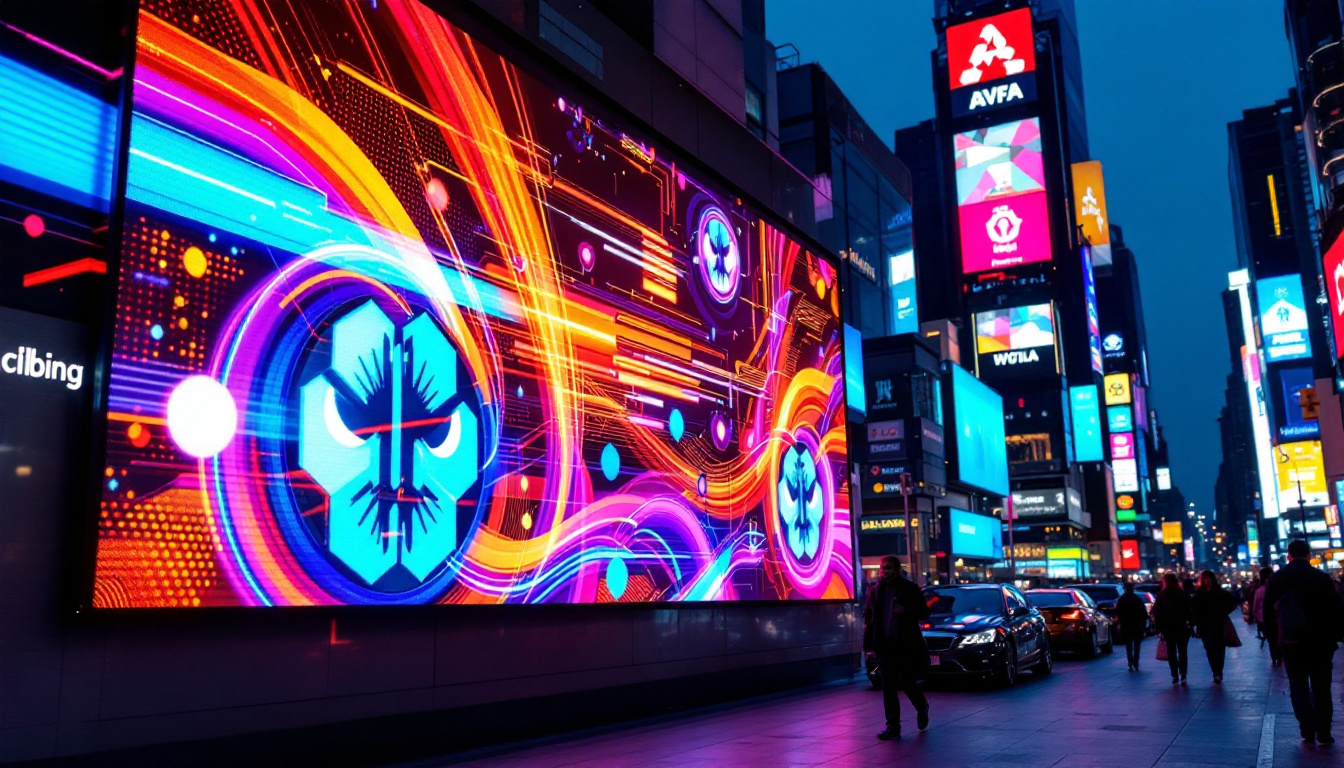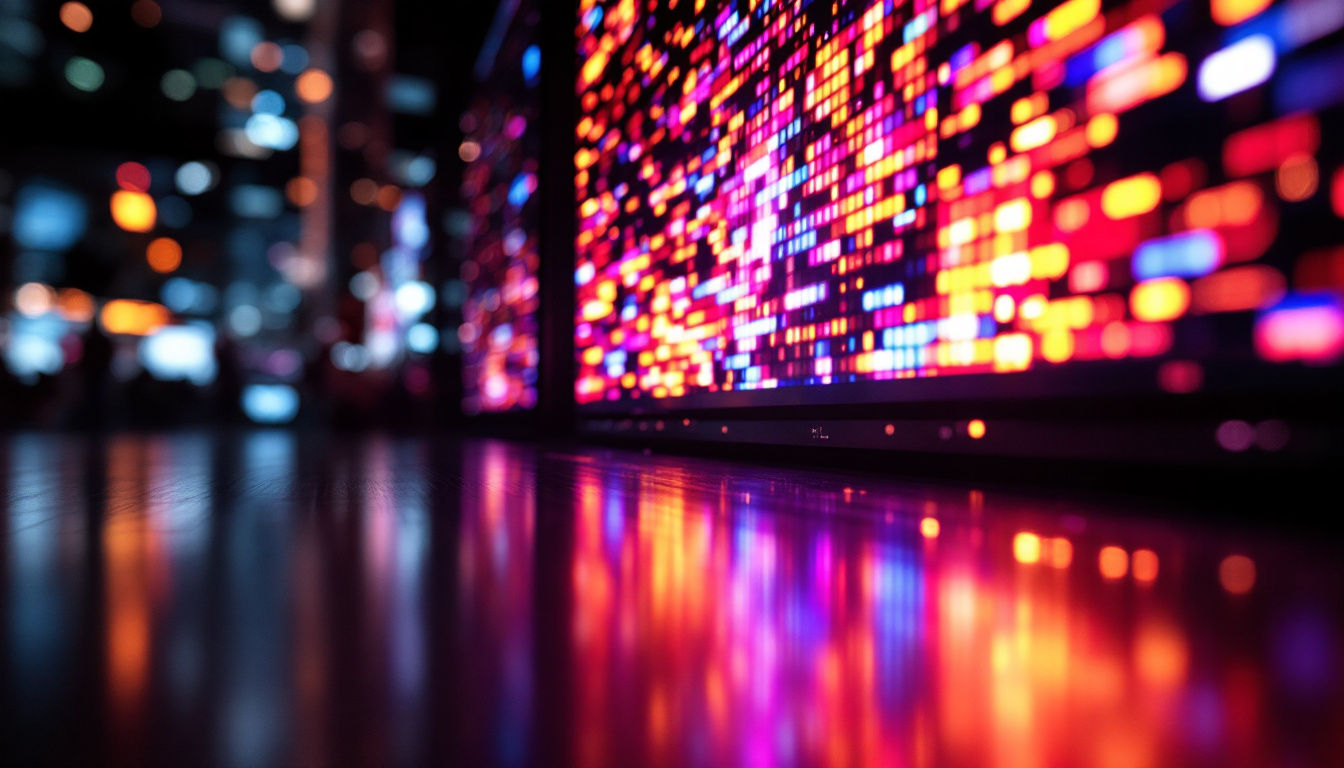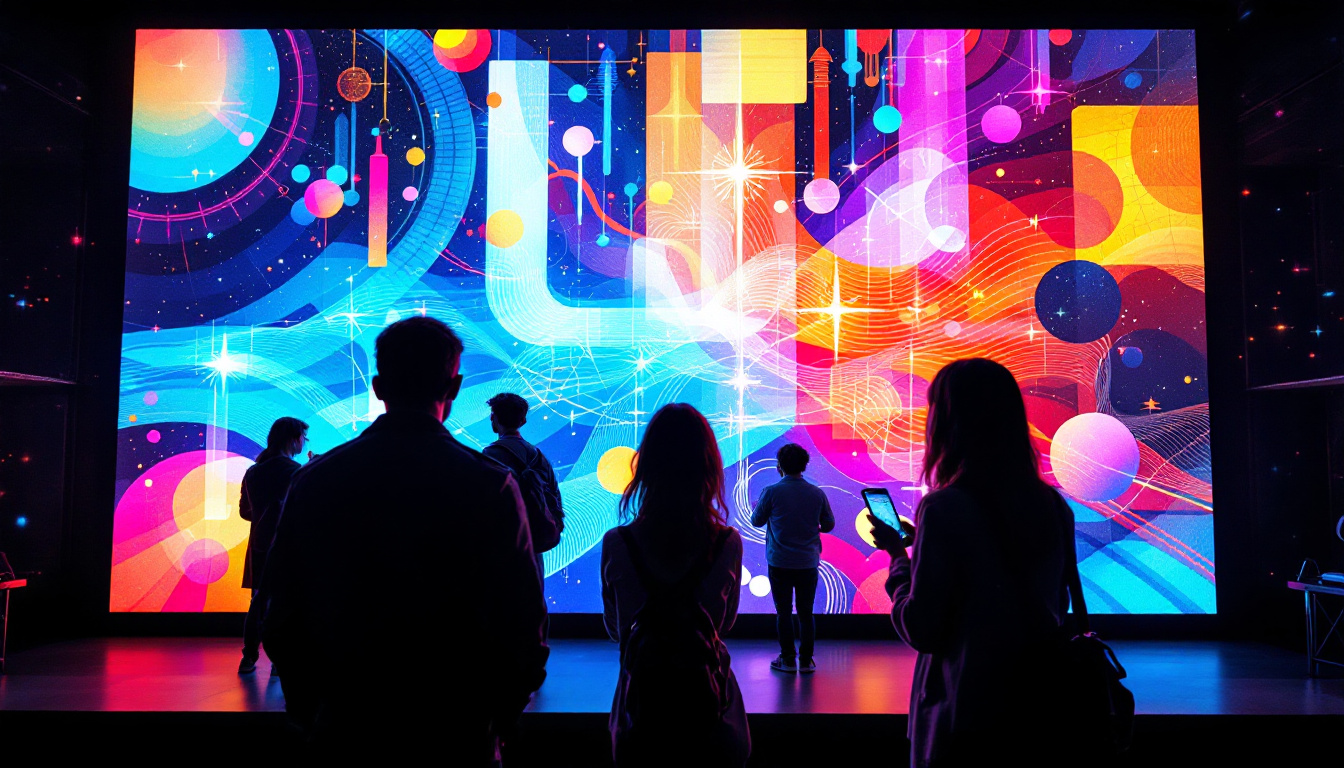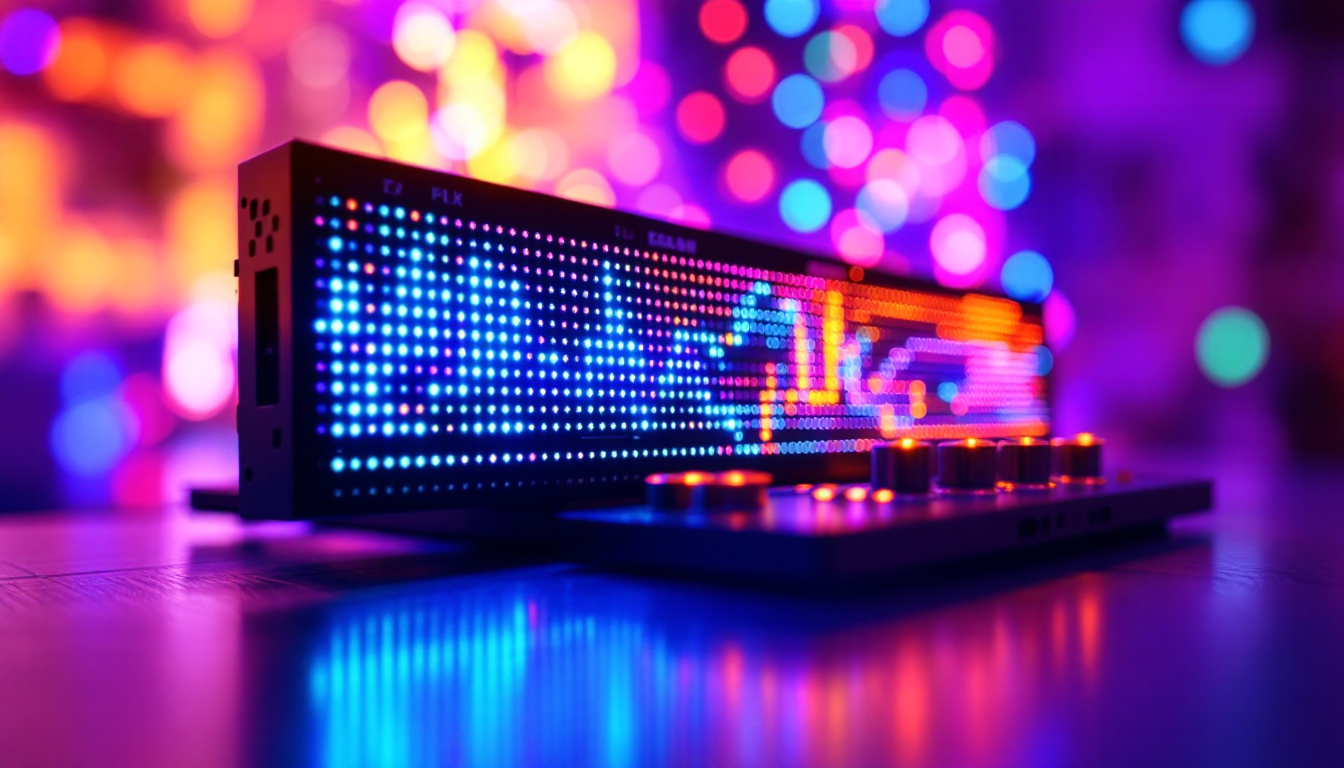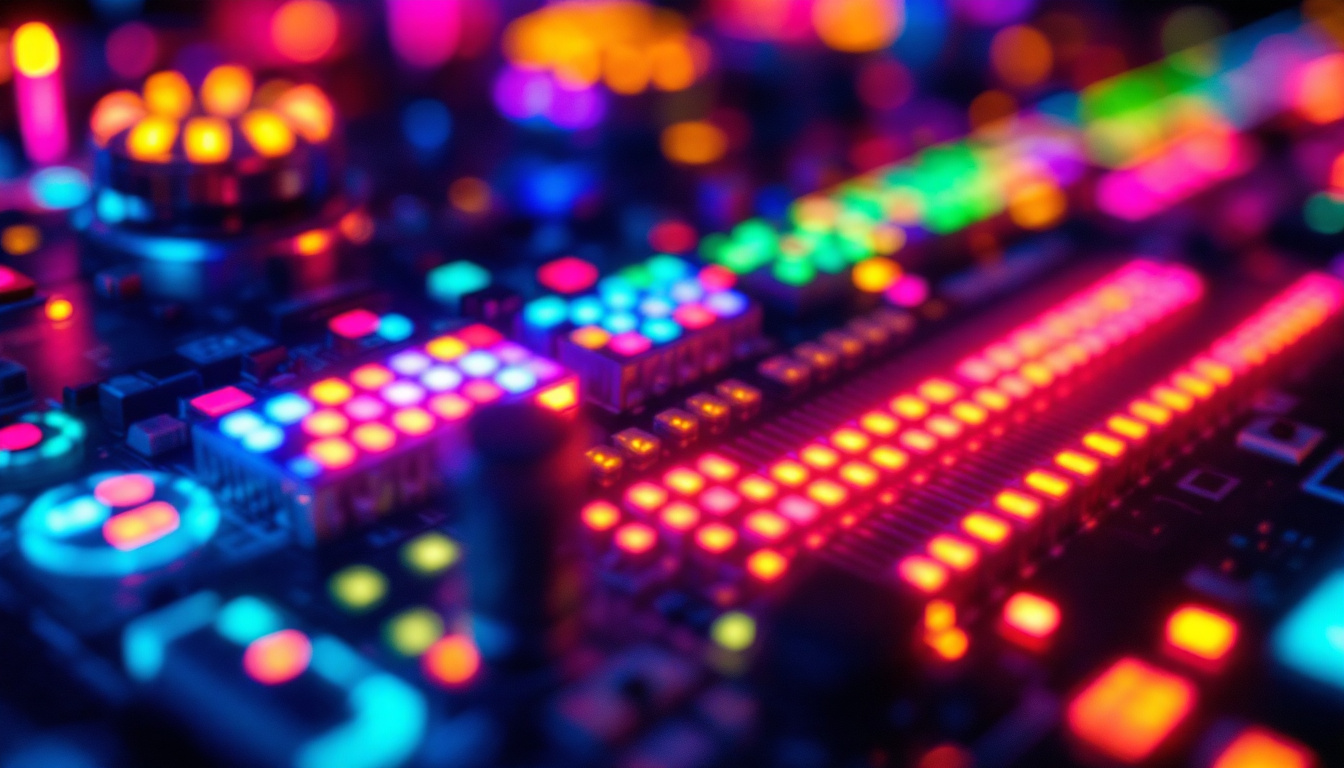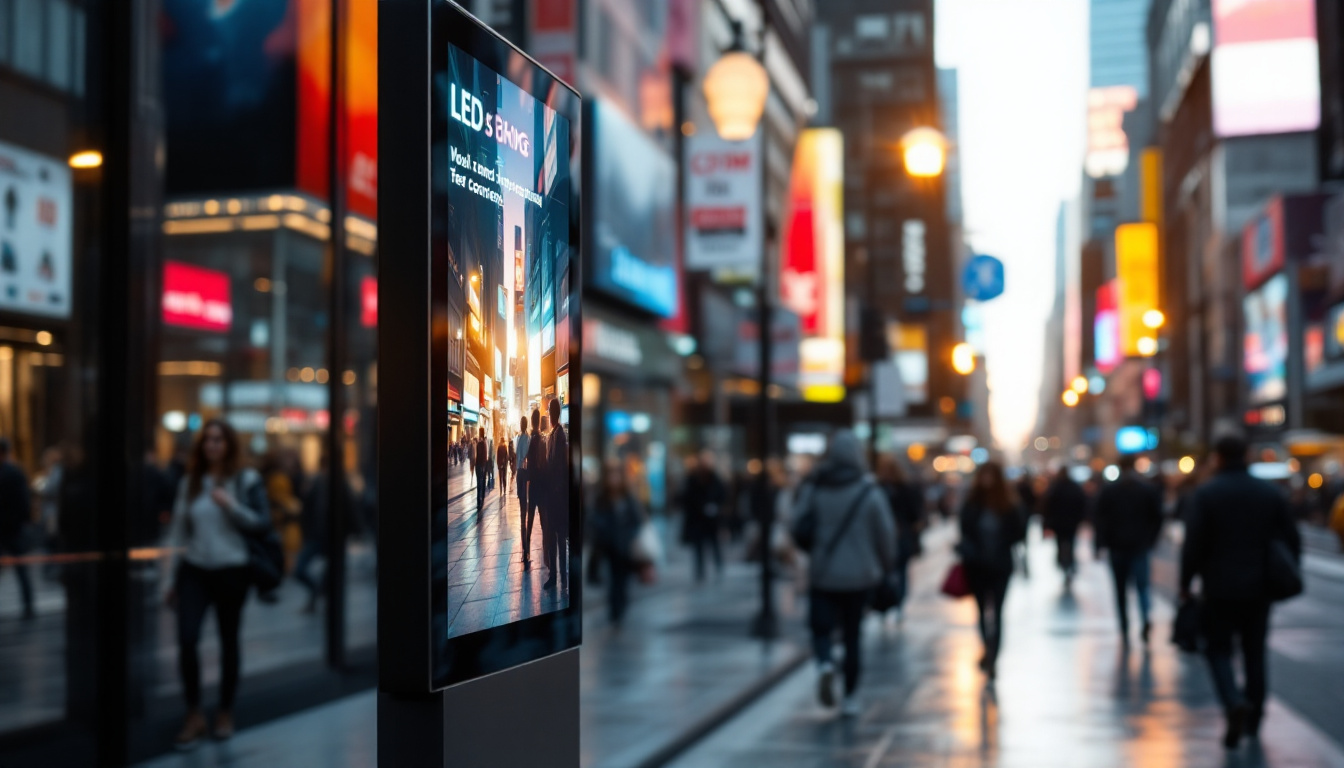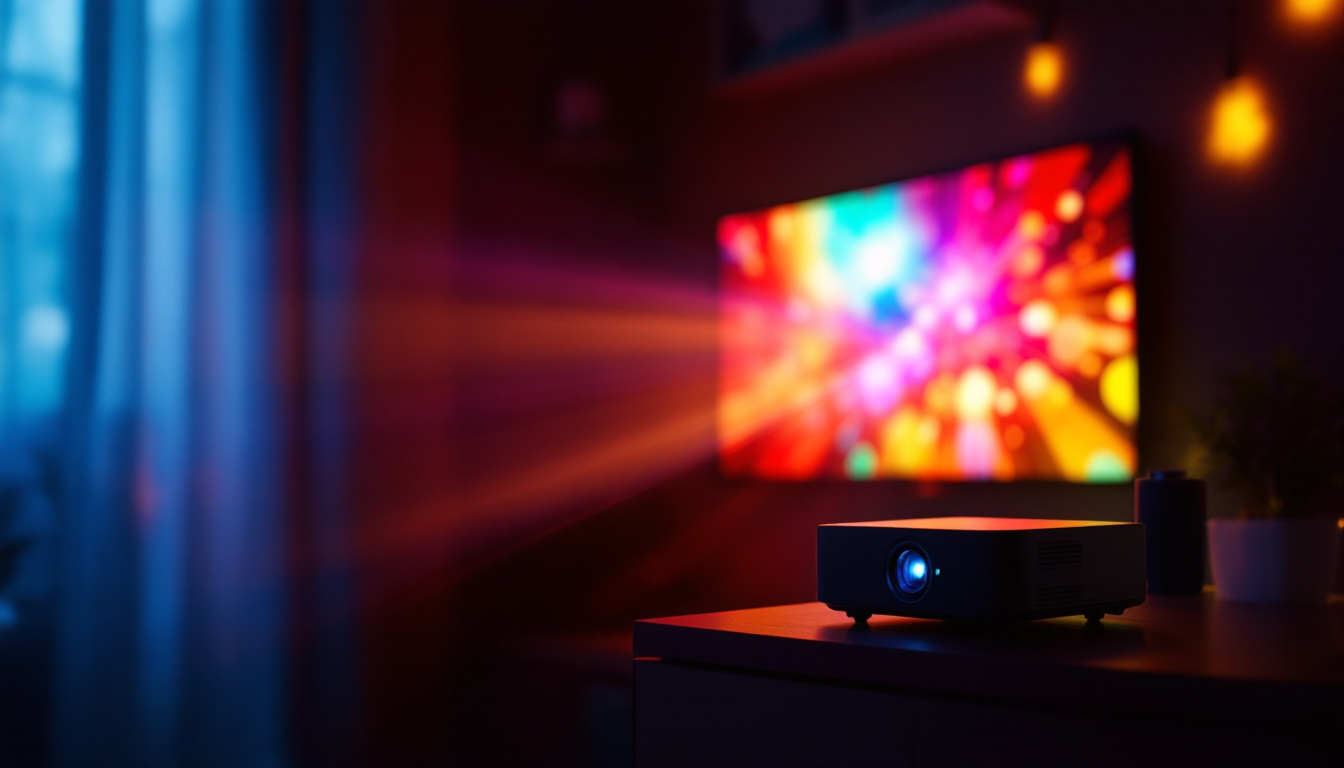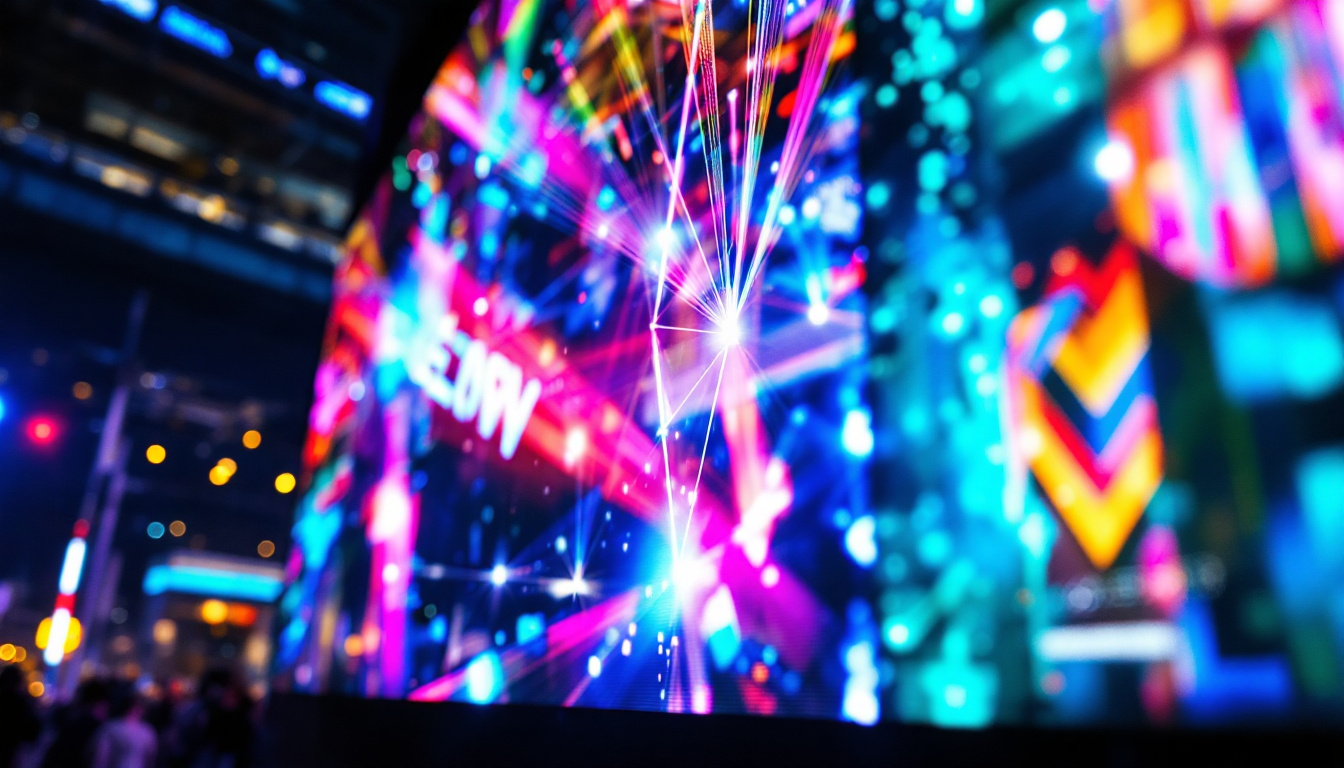In the world of visual technology, LED displays have emerged as a dominant force, revolutionizing how we perceive images and information. From televisions to billboards, the applications of LED technology are vast and varied. This article delves into the intricacies of LED displays, exploring their functionality, advantages, and the future they hold in the realm of visual communication.
Understanding LED Technology
LED stands for Light Emitting Diode, a semiconductor device that emits light when an electric current passes through it. This technology has evolved significantly since its inception, leading to a variety of applications in display technology. The journey of LED technology began in the early 1960s, and since then, it has transformed from simple indicator lights to complex displays that are now ubiquitous in our daily lives, from smartphones to massive outdoor billboards.
The Basics of LED Operation
At its core, an LED display consists of numerous tiny light-emitting diodes arranged in a matrix. When electricity flows through these diodes, they emit light, which can be manipulated to create images and videos. The colors produced by an LED display come from combining red, green, and blue (RGB) light, allowing for a broad spectrum of colors to be displayed. This RGB color model is fundamental in digital displays, enabling the creation of vibrant visuals that can captivate audiences. Furthermore, the efficiency of LED technology means that it consumes less power compared to traditional lighting solutions, making it an environmentally friendly option.
LED displays can be categorized into two main types: direct view and backlit. Direct view displays use LEDs as the primary light source, while backlit displays utilize LEDs to illuminate an LCD panel. Both types have their unique advantages and applications, making them suitable for various environments. For instance, direct view LED displays are often used in outdoor settings due to their high brightness and visibility in sunlight, while backlit displays are popular in consumer electronics like televisions and computer monitors, where they provide excellent color reproduction and viewing angles.
Types of LED Displays
LED displays can be classified into several types based on their application and technology. The most common types include:
- OLED (Organic LED): Utilizes organic compounds to produce light, offering superior contrast and color accuracy. OLED technology allows for thinner displays and flexible designs, making it ideal for modern smartphones and televisions.
- Mini LED: A newer technology that uses smaller LEDs for backlighting, providing enhanced brightness and contrast. Mini LED displays can achieve deeper blacks and more vibrant colors, making them a popular choice for high-end displays.
- Micro LED: A cutting-edge technology where each pixel is an individual micro-sized LED, allowing for incredible resolution and flexibility. Micro LED displays promise to revolutionize the industry with their ability to create seamless large screens without bezels, perfect for immersive viewing experiences.
Each of these types has distinct characteristics that cater to specific needs, from high-end televisions to large-scale advertising displays. Moreover, advancements in LED technology continue to push the boundaries of what is possible. For example, researchers are exploring the potential of quantum dots in conjunction with LEDs to enhance color accuracy and efficiency further. This ongoing innovation ensures that LED technology remains at the forefront of display solutions, continually adapting to meet the demands of consumers and industries alike.
Advantages of LED Displays
LED displays offer numerous advantages over traditional display technologies, making them a preferred choice for many applications. These benefits include energy efficiency, longevity, and superior image quality.
Energy Efficiency
One of the most significant advantages of LED displays is their energy efficiency. Compared to traditional incandescent or fluorescent displays, LED technology consumes significantly less power. This efficiency not only reduces energy costs but also contributes to a lower carbon footprint, making LED displays an environmentally friendly option. Additionally, the lower heat output of LEDs means that they require less cooling, further enhancing their energy-saving capabilities. This characteristic is particularly beneficial in large installations, such as stadiums or shopping malls, where the cumulative energy savings can be substantial.
Longevity and Durability
LED displays are known for their impressive lifespan, often lasting tens of thousands of hours. This longevity translates to lower maintenance costs and less frequent replacements, making them a cost-effective solution in the long run. Additionally, LEDs are more durable than traditional display technologies, withstanding shocks and vibrations, making them ideal for outdoor and high-traffic environments. Their resilience to weather conditions, such as rain or extreme temperatures, allows for consistent performance in various settings, from outdoor billboards to indoor exhibition displays. This durability ensures that businesses can rely on LED displays for continuous operation without the frequent interruptions that can plague other display types.
Superior Image Quality
When it comes to image quality, LED displays excel in several areas. They offer higher brightness levels, better contrast ratios, and vibrant colors, resulting in stunning visuals that capture attention. Furthermore, advancements in technology have led to improved viewing angles, ensuring that images remain clear and vibrant from various perspectives. The ability to produce deep blacks alongside bright whites enhances the overall viewing experience, making LED displays particularly effective for video content and dynamic presentations. Moreover, with the integration of technologies like HDR (High Dynamic Range), LED displays can deliver even more lifelike images, appealing to audiences in settings ranging from corporate presentations to cinematic experiences.
Applications of LED Displays
The versatility of LED displays has led to their widespread adoption across various industries. From entertainment to advertising, their applications are diverse and impactful.
Entertainment and Media
In the entertainment industry, LED displays are used in concerts, theaters, and sporting events to create immersive experiences. Large LED screens provide dynamic visuals that enhance the audience’s engagement, while smaller displays can be found in venues for information and promotional content. The vibrant colors and high resolution of LED technology allow for stunning visual effects that can synchronize with live performances, creating a captivating atmosphere. Moreover, the ability to display real-time content, such as social media feeds or audience reactions, further enriches the experience, making it interactive and memorable.
Advertising and Marketing
digital signage has transformed the advertising landscape, with LED displays playing a pivotal role. Billboards, storefront displays, and transit advertising utilize LED technology to deliver eye-catching content that can be updated in real-time. This flexibility allows businesses to tailor their messages to specific audiences and events, maximizing their marketing efforts. Additionally, the use of LED displays in advertising has proven to increase foot traffic and sales, as the bright, animated visuals capture attention more effectively than traditional static signs. Brands are also leveraging LED technology for experiential marketing campaigns, creating interactive installations that engage consumers on a deeper level and encourage sharing on social media platforms.
Public Information Systems
LED displays are also employed in public information systems, such as transportation hubs and municipal buildings. They provide essential information, including arrival and departure times, emergency alerts, and community announcements. The clarity and visibility of LED displays ensure that crucial information is communicated effectively to the public. Furthermore, the integration of LED technology with smart systems allows for real-time updates, which is particularly beneficial in emergency situations where timely information can make a significant difference. In addition to transportation, LED displays are increasingly used in educational institutions to share announcements, schedules, and event information, fostering a more connected and informed community.
The Future of LED Display Technology
As technology continues to advance, the future of LED displays looks promising. Innovations in design, efficiency, and functionality are paving the way for even more applications and enhanced user experiences.
Advancements in Display Technology
Emerging technologies such as flexible and transparent LED displays are set to change the landscape of visual communication. Flexible displays can be curved or bent, allowing for creative installations that were previously impossible. Transparent LED displays offer unique possibilities for retail environments, enabling businesses to showcase products while maintaining visibility into their stores.
Integration with Smart Technology
The integration of LED displays with smart technology is another exciting development. With the rise of the Internet of Things (IoT), LED displays can be connected to various devices and systems, allowing for real-time data integration and interactive content. This connectivity enhances user engagement and provides businesses with valuable insights into consumer behavior.
Challenges and Considerations
Despite their many advantages, LED displays are not without challenges. Understanding these challenges is crucial for organizations considering the adoption of LED technology.
Cost Considerations
While the cost of LED displays has decreased over the years, they can still represent a significant investment, especially for large-scale installations. Organizations must weigh the initial costs against the long-term benefits, including energy savings and reduced maintenance expenses.
Environmental Impact
Although LED displays are more energy-efficient than traditional technologies, they still have an environmental impact. The production and disposal of electronic components can contribute to electronic waste. As such, manufacturers and consumers alike must consider sustainable practices, including recycling and responsible disposal methods.
Conclusion
LED displays have transformed the way we interact with visual content, offering unparalleled advantages in energy efficiency, longevity, and image quality. Their diverse applications span multiple industries, from entertainment to advertising, making them a vital component of modern communication. As technology continues to evolve, the future of LED displays promises even more innovations that will further enhance our visual experiences.
In a world where visual communication is paramount, understanding LED technology is essential for businesses and consumers alike. Embracing the benefits of LED displays can lead to improved engagement, increased efficiency, and a more sustainable approach to visual technology.
Discover the Future of Visual Technology with LumenMatrix
As you’ve seen, LED displays are reshaping the landscape of visual communication, offering dynamic and efficient ways to present content. If you’re ready to elevate your visual impact, explore LumenMatrix’s innovative LED display solutions. From Indoor and Outdoor LED Wall Displays to specialized options like Vehicle and Sports LED Displays, LumenMatrix provides a wide array of cutting-edge products designed to captivate your audience and amplify your message. Experience the revolution in visual communication by visiting LumenMatrix LED Display Solutions and take the first step towards transforming your space with unparalleled clarity and vibrancy.

